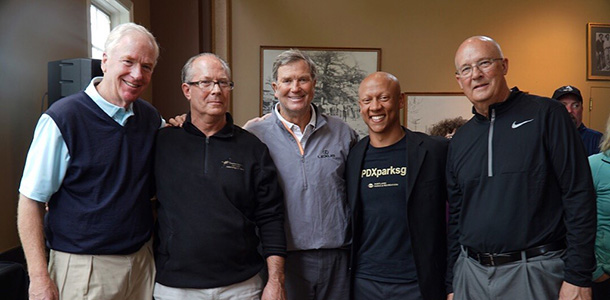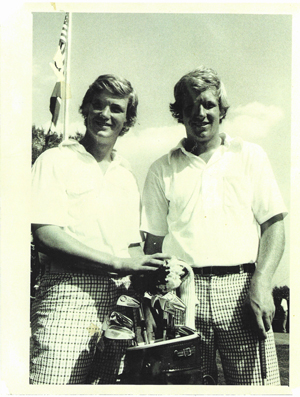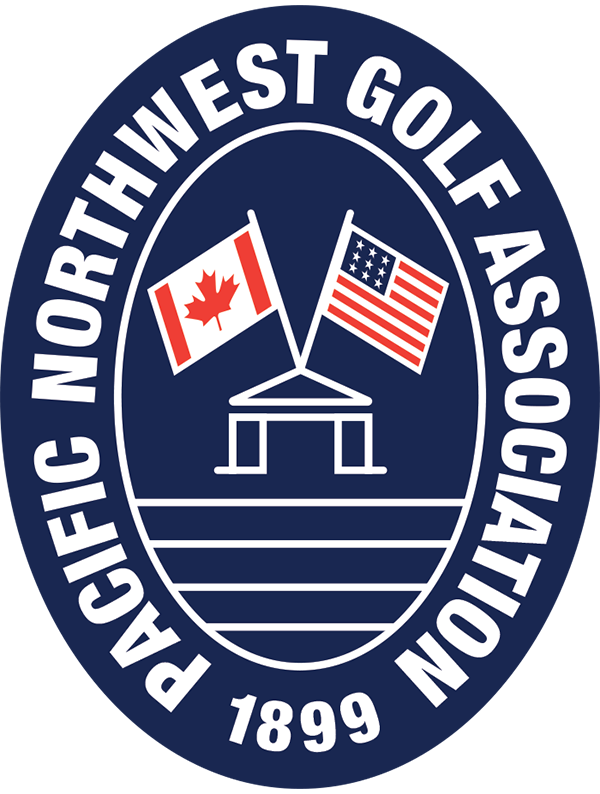Peter Jacobsen cherishes legacy of those who taught him as junior golfer
by Ron Bellamy
In retrospect, looking back roughly half a century, Peter Jacobsen doesn’t remember the tournaments he played as a youngster as much as the passionate Portland-area golf figures who inspired and supported them.
“Junior golf was Bob Norquist, George Mack, Jerry Cundari, all the committed individuals who made it possible for us to play junior tournaments,” Jacobsen recalled.
Those were huge names in Portland golf, back in the day. Norquist was the longtime chairman of Oregon Junior Golf. Cundari and Mack were avid players, and supporters of junior golf tournaments.
There weren’t as many tournaments, back then, but enough, and team events such as the Hogan Cup gave Jacobsen and other golfers from Oregon a chance to measure themselves against the best young golfers from California, Washington and elsewhere in the west.
“You don’t know how good you are or what you have to work on until you see other players,” Jacobsen said.
Turns out Peter Jacobsen was pretty good. He was 14 when he recorded his first hole in one, playing with his brother David at Gearhart Golf Links on the Oregon coast. He was a state champion for Lincoln High School, played collegiately at the University of Oregon, was a longtime fixture on the PGA Tour, winning seven times, and continues to play on the Champions Tour, where he’s won twice, including the 2004 U.S. Senior Open. His career earnings are listed at $11.2 million.

But there’s more — an event management company, a golf course design business, contributions to multiple charities. As a broadcaster and personality — remember his role in the movie “Tin Cup”? — Jacobsen is one of the most recognizable figures in professional golf, a recognized ambassador for the game.
He grew up in that game, under the tutelage of some caring teachers, pros who cared about junior golf. “I learned my golf from Jack Doss at Waverley (Country Club), Mike Davis at Waverley, Tim Berg (director of City of Portland golf courses), Marlow Quick at Astoria,” Jacobsen said. “Those were the guys who gave me lessons and were patient with me.
“Along with my father.”
Erling Jacobsen reared a family of golfers, and his memory endures in the Oregon Golf Association’s Jacobsen Youth Initiative, part of Oregon Junior Golf, which consists of the Erling Jacobsen Tour and Youth on Course.
“He didn’t really like golf as a competitive sport,” Jacobsen said. “He loved it as a way to bond with people, and the camaraderie and the relationships you can build. He just loved the act of hitting a golf ball. He always said golf is more of an art form than it is athletic. Try to make a ball curve left to right, or keep it down under a tree, or hit it high up over a tree.
“I came to understand what he was talking about as I got better and went out on Tour. I’ve played with some incredible magicians, people like Seve Ballesteros, Ben Crenshaw, Jack Nicklaus, Tiger Woods and Tom Watson, guys that hit the creative shot when they need it. That’s the biggest lesson I learned. You have to hit the shot on call. You better have a lot of different shots in your arsenal.”
Erling Jacobsen also cherished the etiquette and manners of golf, and taught his son an enduring lesson in that as well.
“I had a really bad temper when I was a kid,” Jacobsen said. “I’d hit a bad shot and I’d explode. I’d slam my clubs, I’d kick my bag.”
In his book “Buried Lies,” Jacobsen recalled his temper, around the age of 12, which included slamming his club head off the ground after bad shots. He was playing Astoria Golf and Country Club with his father and brother David, and was warned by his father that his behavior was inappropriate.
“We were on the tee of the seventh hole, a par-4,” Jacobsen wrote. “I followed my normal routine of waggle, swing, follow-through, bad-shot, Whop. My driver embedded in the ground and I screamed an obscenity.
“’That’s it, Peter!’ my dad said. ‘If you cannot act like a gentleman, you can’t play anymore golf today.’ He told me to go back and sit in the car while they finished the round.”
Recalls Jacobsen now: “He didn’t call the shop and ask someone to pick me up in a cart. He said, ‘Walk back to car. You know the way.’ So I retraced my steps down the car. And he didn’t give me the keys. I didn’t sit in the car, I sat on the car, by the car.
“He told me, ‘If you can’t control your temper and play this game for the love of it and be a gentleman, then you’re not going to play the game.’ I’ve come to appreciate the fact that when you’re a Tour pro, nobody really cares what you shoot. If they know who you are, they know you as a good player. If you happen make a bogey or double, they really don’t care. You care, but they don’t.
“You’re there to set an example. My dad told me and taught me that the example you’re going to set is one of a gentleman, someone who is fortunate to play the game. And I’ve carried that attitude with me the rest of my life.”

From the perspective of someone who has gone on from junior golf to a career in the game, Jacobsen offers this advice to young players:
“Simply work from 20 yards and in. I’ve learned over my years that you can be a wild driver and still win a lot of tournaments. Case in point, Tiger Woods and Phil Mickelson. Two of the greatest players we’ve had in the game, and certainly in this generation, but if you look at their driving accuracy stats, they’re not very good, but what they are, they are magicians at getting the ball up and down.
“When I got on Tour, I worked with (short-game guru) Dave Pelz, and he said to me that if you went to every golf hole, walked 20 yards out, and put a circle around that point, and you worked day and night from within that 20-yard circle, you’ll win a lot of golf tournaments.
“It wasn’t until I took that to heart that I started playing consistent golf and won a little more on Tour, because I worked from 20 yards and in. That’s the message I try to give to the kids; you can go out and you can take lesson after lesson, and you can work with five teachers and they’re going to give you five different opinions on your swing.
“But getting the ball up and down from the bunker, or the edge of the green, or a flop shot, or a downhill chip, or an uphill chip, that doesn’t lie. When you put the ball up there within five feet and knock down the putt, and you mark down a 4 or 5, whatever the number is on your card, you move on, and there’s no pictures, there’s no description, just a number. If you think back of all the great players, of all the heroic shots they’ve hit, a lot of them are around the green and that’s really how you improve your golf.”
Jacobsen also has pointed advice for the parents of junior players:
“Leave them alone. Let them play.
“My dad never walked with me once, he never walked an amateur event, or high school even. Never.
“He said, ‘Look, if you want to play golf, you’ve got to learn to play golf for the love of the game, you, yourself.’ I think a lot of times the helicopter parent, the hovering parents, are there and it’s a crutch for their kid, if they’re running and getting them granola bars and Gatorade at the turn. That’s not a parent’s job. A parent’s job is to drop the child at the course and pick them up when they’re done. The child has to come to the game themselves. Whether they like it or hate it or whether they love it or have a passion for it, you’ll know pretty quickly. Improvement comes from really immersing themselves in the game and understanding the concepts of hitting shots, hitting chips, getting the ball in the hole.
“Mom, drop your child off, sit in the clubhouse, have a cheeseburger and wait for them to finish. The greatest lesson you learn in golf is self-reliance, self-discipline. I’ve been in many situations when I’ve stood on the last hole with a chance to win, and some I’ve won, and some I haven’t, but you know what, there’s one person I have to depend on, and that’s me. You’ve got to learn that. Sometimes people learn that the hard way.
“And maybe some moms and dads are going to read this and think that I’m wrong, but I’ve seen lots of these kids with their parents in their face, carrying their clubs to the car, getting them a burger, and that’s not their job. That would be my advice. Drop your child off at the course, give them enough money for lunch and say ‘what time do you want me to pick you up?’”
(This article previously appeared on OGA.org.)
Ron Bellamy is the former sports editor and columnist for The Register-Guard in Eugene. For past golf writings, visit ronbwriter.com.






